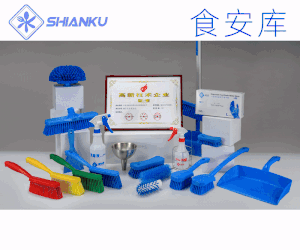食品伙伴網(wǎng)訊 2023年3月6日,歐盟食品安全局(EFSA)發(fā)布2020/2021人畜共患病細菌抗菌素耐藥性(antimicrobial resistance ,AMR)的總結(jié)報告。
部分原文報道如下:
Antimicrobial resistance (AMR) data on zoonotic and indicator bacteria from humans, animals and food are collected annually by the EU Member States (MSs) and reporting countries, jointly analysed by EFSA and ECDC and presented in a yearly EU Summary Report. This report provides an overview of the main findings of the 2020–2021 harmonised AMR monitoring in Salmonella spp., Campylobacter jejuni and C. coli in humans and food-producing animals (broilers, laying hens and turkeys, fattening pigs and bovines under 1 year of age) and relevant meat thereof. For animals and meat thereof, indicator E. coli data on the occurrence of AMR and presumptive Extended spectrum β-lactamases (ESBL)-/AmpC β-lactamases (AmpC)-/carbapenemases (CP)-producers, as well as the occurrence of methicillin-resistant Staphylococcus aureus are also analysed. In 2021, MSs submitted for the first time AMR data on E. coli isolates from meat sampled at border control posts. Where available, monitoring data from humans, food-producing animals and meat thereof were combined and compared at the EU level, with emphasis on multidrug resistance, complete susceptibility and combined resistance patterns to selected and critically important antimicrobials, as well as Salmonella and E. coli isolates exhibiting ESBL-/AmpC-/carbapenemase phenotypes. Resistance was frequently found to commonly used antimicrobials in Salmonella spp. and Campylobacter isolates from humans and animals. Combined resistance to critically important antimicrobials was mainly observed at low levels except in some Salmonella serotypes and in C. coli in some countries. The reporting of a number of CP-producing E. coli isolates (harbouring blaOXA-48, blaOXA-181, and blaNDM-5 genes) in pigs, bovines and meat thereof by a limited number of MSs (4) in 2021, requests a thorough follow-up. The temporal trend analyses in both key outcome indicators (rate of complete susceptibility and prevalence of ESBL-/AmpC- producers) showed that encouraging progress have been registered in reducing AMR in food-producing animals in several EU MSs over the last years.
更多詳情參見:https://efsa.onlinelibrary.wiley.com/doi/10.2903/j.efsa.2023.7867
本文由食品伙伴網(wǎng)食品資訊中心編輯,供網(wǎng)友參考,有任何疑問,請聯(lián)系news@foodmate.net。
相關(guān)政策解讀











 地區(qū):
地區(qū):






 魯公網(wǎng)安備 37060202000128號
魯公網(wǎng)安備 37060202000128號



